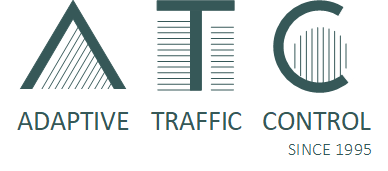

We are pleased that you have landed on our homepage! Our company was founded in 1995 and considers itself as a continuation of the engineering doctoral thesis "Control in traffic systems". We have brought the ideas to market maturity and have been continuously developing them ever since.
Observe, understand, control
We develop and offer products and services in the field of observation,
control and traffic quality determination of road networks. The better the
quality and preparation of the data for a regulation, the easier it is to
design a good control. For this purpose, it is important to be able to
observe and capture the system as vividly as possible.
Quality
For this purpose, sufficient measurement data must be available in
sufficient
quality. In terms of control
science, it is the task of an observer to prepare this measurement data for
the controller. Often, an observer's calculations are based on unprocessed,
raw data such as edges of occupancy signals and speed of individual
vehicles. Not only data from the system itself can be used (detectors,
signal groups), but they can also be collected from the outside (measurement
drives, floating car data).
Travel time, speed, traffic jam
length, number of stops
One of the important
and quality-relevant measurements of a traffic system is vehicle travel time
with its derivatives as number of stops (a criterion for noise and air
pollution control), average speed (a criterion for the incentive to drive a
route) and duration of spillbacks. We make these quantities measurable, even
if only detector slopes can be measured. In the best case, the use of such
raw data enables microscopic tracking of individual vehicles or mesoscopic
tracking of vehicle groups.
Quality analysis and network control
The focus of our products and services is on traffic monitoring and thus
directly related to quality analysis of road traffic systems. This can be
done online or offline. If one carries out quality analysis online, one can
use rules to intervene directly in the measured system and influence it in
such a way that the quality is improved. This is how our network control
works. In addition to travel time of individual vehicles, criteria such as
coordination of neighboring controllers, public transport priority
(preemption), capacity control to increase it or for dosage also play an
important role.
Interfaces
Where communication with other systems is required to integrate our
products, we have quite a lot of experience with interfaces. For example, we
have been actively involved in the development of the
OCIT standard (urban networks) and we are well versed
in
NTCIP (North America) and
TLS (highways).
Our products are mainly used in European countries. go to main content